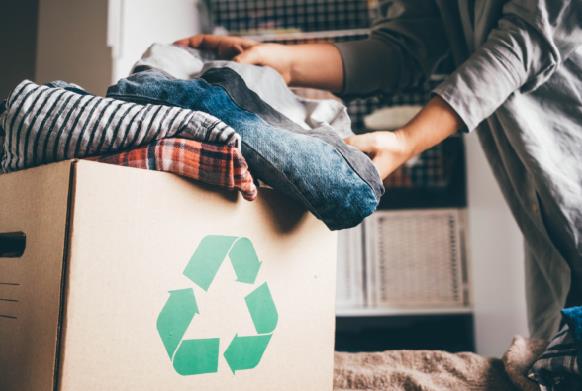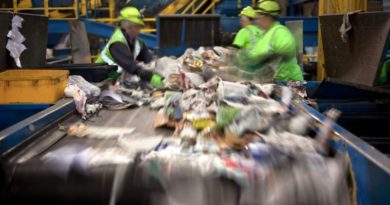
Ready for Circular Economy: Turning textiles inside out
Textiles are our second skin, whether it is your favourite T-shirt or a cushion on the sofa, they surround us every day and everywhere. A daily life without textiles is not imaginable.
Today the fashion industry presents itself like a dream, with beautiful photos, glamorous catwalks and promising claims. However, on closer look, the dream shatters. Moreover, the reality shows one of the most polluting and inhumane industries in the world.
To a large extent Europe’s current economic model is based on a ‘take-make-consume-dispose’ pattern of growth. This linear model is based on the assumption that resources and energy are abundant, available and cheap to dispose of. This is especially the case for the methods of the fast fashion industry.
The global textile and clothing industry is currently responsible for 92 million tonnes of waste annually. An industry mainly driven by fossil fuels. In 2015, we consumed 98 million tonnes of oil just for the fashion industry.
Mostly for the production of synthetic fibres, which account for a large proportion of the materials used. It is estimated that there are already 1.4 trillion microfibers in the oceans. The washing of synthetic fibre clothing accounts for the largest share of all, 35%. Every year, 552,000 tonnes of microfibers alone end up in the water.
We are producing more clothes and textiles than ever before. In the EU alone, demand has increased by 40% in recent decades. We consume more and more often than ever before. At the same time, we only wear our clothes a few times on average. We forget how much work and resources are used. More collections than there are seasons, faster trends and before the new collection is in the shops and websites, yesterday’s collection is incinerated. At the same time, only 1% are recycled.
However, not only the environment pays its price, but also the people who produce our textiles along the entire supply chain.
The industry employs 60 million people worldwide, most of them women. The wages of garment workers are often far away from living wages. Unpaid overtime, health hazards, no fixed contracts, psychological and physical abuse are just some of the problems in the industry.
Regardless of whether it is in the cotton field or in the textile factory, precarious working conditions dominate. All over the world, women are hit particularly hard by environmental disasters and climate extremes. We cannot cope with the worst crisis in the world without involving half of its population.
The constant downward pressure on social and environmental standards is leading to more and more social inequalities and environmental devastation. The circular economy must play a major part in managing the transition towards social, economic and environmental sustainability.
Without a functioning circular economy, we cannot achieve climate neutrality and thus stop climate change. We therefore need binding rules, which guarantee a responsible use of our raw materials worldwide.
We as the EU must lead by example and ensure that the textiles sold in our shops, guarantee high environmental and human rights standards.
The responsibility for sustainable purchasing should no longer be shifted to consumers alone, but the existing linear model must be stopped – towards a circular and decent model that does not rely on volume.
For this, we need binding legislation, because so far the textile industry has been left relatively untouched by lawmakers.
Therefor I call for European legislation, which guarantees that fashion is not produced at the cost of environmental destruction and human lives.
Legislation that prevents unsold clothes from being shredded or sent to landfill just because they are no longer in fashion or the warehouse is full. Only textiles that meet a minimum standard of sustainability requirements should be imported into the EU or produced within the EU. We need to design textiles reusable, repairable, recyclable and energy efficient. Therefor the EU has to set binding targets for the reduction of its carbon footprint. One core problem is overconsumption and overproduction. A holistic strategy for sustainable textiles can only be genuine, if we reduce the absolute quantity of natural resources and on the same time reduce the quantity of waste. In concrete terms, this means that we can recycle as much as we want, but if we do not address the overproduction of textiles, we are only scratching the surface.
I call for legislation that prohibits inhumane workplaces – also here in Europe. To ensure this we need decent wages, fair working hours, healthy working conditions, binding employment contracts, freedom of association and a right to collective bargaining.
With the European Green Deal and the EU Strategy for sustainable and circular textiles, we now have the chance to decide whether sustainable clothing will only be a lifestyle for a certain group of people, or whether it will become the norm.




